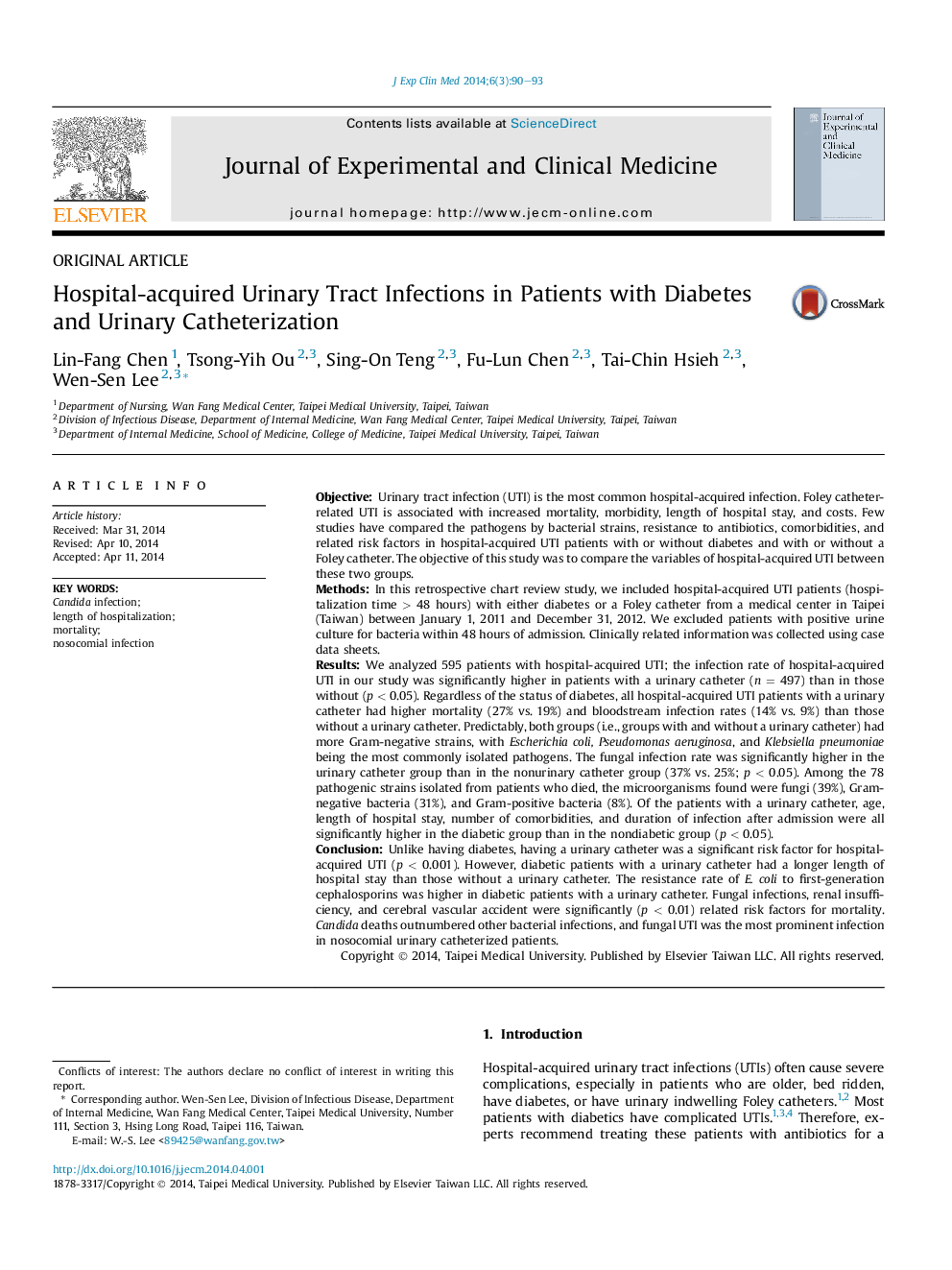| کد مقاله | کد نشریه | سال انتشار | مقاله انگلیسی | نسخه تمام متن |
|---|---|---|---|---|
| 3477749 | 1233360 | 2014 | 4 صفحه PDF | دانلود رایگان |
ObjectiveUrinary tract infection (UTI) is the most common hospital-acquired infection. Foley catheter-related UTI is associated with increased mortality, morbidity, length of hospital stay, and costs. Few studies have compared the pathogens by bacterial strains, resistance to antibiotics, comorbidities, and related risk factors in hospital-acquired UTI patients with or without diabetes and with or without a Foley catheter. The objective of this study was to compare the variables of hospital-acquired UTI between these two groups.MethodsIn this retrospective chart review study, we included hospital-acquired UTI patients (hospitalization time > 48 hours) with either diabetes or a Foley catheter from a medical center in Taipei (Taiwan) between January 1, 2011 and December 31, 2012. We excluded patients with positive urine culture for bacteria within 48 hours of admission. Clinically related information was collected using case data sheets.ResultsWe analyzed 595 patients with hospital-acquired UTI; the infection rate of hospital-acquired UTI in our study was significantly higher in patients with a urinary catheter (n = 497) than in those without (p < 0.05). Regardless of the status of diabetes, all hospital-acquired UTI patients with a urinary catheter had higher mortality (27% vs. 19%) and bloodstream infection rates (14% vs. 9%) than those without a urinary catheter. Predictably, both groups (i.e., groups with and without a urinary catheter) had more Gram-negative strains, with Escherichia coli, Pseudomonas aeruginosa, and Klebsiella pneumoniae being the most commonly isolated pathogens. The fungal infection rate was significantly higher in the urinary catheter group than in the nonurinary catheter group (37% vs. 25%; p < 0.05). Among the 78 pathogenic strains isolated from patients who died, the microorganisms found were fungi (39%), Gram-negative bacteria (31%), and Gram-positive bacteria (8%). Of the patients with a urinary catheter, age, length of hospital stay, number of comorbidities, and duration of infection after admission were all significantly higher in the diabetic group than in the nondiabetic group (p < 0.05).ConclusionUnlike having diabetes, having a urinary catheter was a significant risk factor for hospital-acquired UTI (p < 0.001). However, diabetic patients with a urinary catheter had a longer length of hospital stay than those without a urinary catheter. The resistance rate of E. coli to first-generation cephalosporins was higher in diabetic patients with a urinary catheter. Fungal infections, renal insufficiency, and cerebral vascular accident were significantly (p < 0.01) related risk factors for mortality. Candida deaths outnumbered other bacterial infections, and fungal UTI was the most prominent infection in nosocomial urinary catheterized patients.
Journal: Journal of Experimental & Clinical Medicine - Volume 6, Issue 3, June 2014, Pages 90–93
